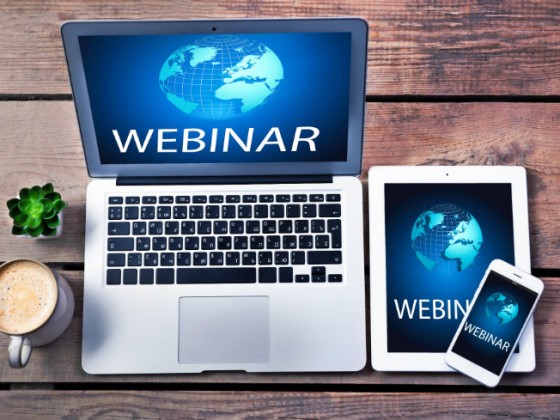The powerful thing about foresight, especially if you use causal layered analysis, is that you touch people’s emotions and feelings.
– Susann Roth, Asian Development Bank
The following touches on how Asian Development Bank (ADB) works with policy makers to bring futures thinking and foresight into decision-making and how ADB monitors something not easily measurable.
ADB’s Susann Roth speaks to Umar Sheraz, Journal of Futures Studies
We need more bespoke engagement—“co-creation”—with policy makers. It is not about talking at each other but talking with each other. Foresight enables people to use not only evidence but also their imagination and creativity. This is often missing in highly bureaucratic public sectors.
What indicators does ADB use to monitor progress, especially in auditing a foresight program?
How do we prove that our foresight engagement and foresight program add value? The program opens the mind. It looks at uncertainties. It uses creativity to grade these scenarios. Then you can innovate in backcasting policy decisions and the investments that need to follow. The program is one tool for engaging in dialogue on innovation. For an organisation like ADB, evidence that the program works is of the greatest importance. The program should result in, first, better policy dialogue and more sustainable and equitable policies. Second, the program should encourage positive engagement with our member countries so that they want to work with ADB as a knowledge partner on foresight and national policies. The partnership should shape investment decisions. And third, the foresight program should raise the quality of our projects and other programs and make them more efficient, effective, sustainable, and relevant.
What is relevant today is different, of course, from what will be relevant in 10 to 20 years. The success of foresight programs has to do with inspiring people. Yes, we are a multilateral development bank but we must set agendas and help people have the vision and inspire them to do the work. We want to be part of that change and we want to see that change for our children.
ADB still needs to monitor progress. For example, how many kilometers of roads have been financed or has gross domestic product per capita improved?
Our new corporate results framework looks also at all kinds of quality outputs, which go beyond kilometers of roads or transmission lines built. ADB has one of the best corporate results frameworks among multilateral development banks and we are proven to be among the best in development effectiveness.
Our economists are interested in social and sustainable development and in how you link that with GDP. There are discussions about circular economies and green economies. How do you reduce poverty while reducing carbon dioxide emissions? Once we have the answer, then we also have the Holy Grail and a silver bullet. Strategy 2030 makes it clear that innovation needs to happen.
Let us talk about the paradox of a used future. A big issue with e-health, for example, is that it represents a used future. It is glitzy but has not served who it was supposed to serve. How do you encourage your stakeholders not to pursue used futures?
When we developed the e-health or digital health agenda at ADB, we used foresight. We said that is the future and we must use digital tools to reach more people and improve the quality of care. E-health is only as good as the benefits to its users. In the context of foresight, you can have various scenarios. You can have a vision of a certain future, but you must understand what kind of foundations you need to put in place to get to that kind of future. The challenge is in the mistake we sometimes make: let us just leapfrog to stage seven and use new technologies. Although this is wonderful and well-meant, we forget the foundations that need to be in place. But you cannot measure them very well. They do not come in kilometers of roads or transmission lines built. The foundations include good governance—information technology in this case—and basic infrastructure, skills, capacity development, human capital development, and so on, which are difficult to measure. A lot depends on education to realise our vision for the future.
At ADB, do you have capacity-building programs to sensitise policy makers to the need for foresight?
The question for me is not so much about capacity development but about how capacity is developed. First, you need to work with the various development partners. Second, you need to combine peer-to-peer learning with bespoke workshops and so on. I am absolutely against any kind of PowerPoint presentation because I do not think that is capacity development. It must be on-the-job learning. We have engaged in various countries on foresight and have started to build foresight literacy.
The powerful thing about foresight, especially if you use causal layered analysis, is that you touch people’s emotions and feelings. You might say that you come from a bank and that we work in financing and policy and there should be no room for feelings and emotions. But feelings and mind-sets, that is what life is about, and this is what humans are about. This makes us different from any artificial intelligence. And I do believe this is where we need to invest: in the emotions and feelings we use to make the right decisions. What is right? It comes back to sustainability and equitability and avoiding a situation where only certain people benefit from policies and investments.
Conclusion
In times of slow or minimal change, futures thinking and foresight are luxury planning approaches. However, in times of rapid change, they are critical for not only the success but also the very survival of an organisation, a corporation, or an institution. Indeed, as the spread of COVID-19 demonstrates, early warning anticipatory systems for nations and the world economy are foundational requirements for the health of the entire system. Futures thinking and foresight help us do the following:
- Map the future so we gain a better sense of direction.
- Anticipate emerging issues and disruptions so that we reduce risk and can avail ourselves of new opportunities.
- Time the future differently by using a three-horizons framework—the present, the uncertain emerging future, and the envisioned long-term future. Organisations keep an eye on all three horizons.
- Include all stakeholders so that risk is reduced, new ideas are created, strategic success is enhanced through partnerships.
- Use scenarios so that different futures are clarified, and distinctions between the used, the disowned, the preferred, and the outlier are understood.
- Move from imagined future to creating desired future. The future imagined is created.
Futures thinking and foresight can be used in different national and institutional settings.
Futures thinking and foresight can help develop water strategies—access to clean water and sanitation—as in Timor-Leste.
Futures thinking and foresight can help anticipate new opportunities as in recycling and space exploration as in Kazakhstan. They can also be used to determine human resource shifts: which jobs are new, which jobs are disappearing, and which jobs are changing. In Kazakhstan, futures thinking was used as well to rethink tourism, to make it far less decentralised, to use new technologies to create new tourism opportunities.
Futures thinking and foresight can move the portfolio, as in the People’s Republic of China, from borrowing for roads to borrowing for knowledge. Futures thinking and foresight anticipate the next development stage and help shift ADB strategy. Knowledge itself must shift, from rote learning to knowledge with wings—both global and applicable to local contexts. ADB in this context changes from being a family doctor to becoming a patient care manager in an increasingly complex development landscape, bringing in global expertise for local change.
Futures thinking and foresight can be used to innovate as in Armenia, which seeks to move toward full green, smart energy, self-sufficient, and inclusive cities. Participants imagined a future of connectivity and renewables with a transformation in education.
Futures thinking and foresight can be used to diversify the economic portfolio as in Cambodia. They can also be used as a lever for economic growth by changing deep social relations, where individuals imagine women as national leaders rather than garment workers. Futures thinking can help tell a new story as in Cambodia, which wishes to shift from a paper-based bureaucracy to a far more efficient cloud-based system, what participants called the e-Buddha (efficient and wise).
Futures thinking and foresight help reshape human resources and educational systems needed to help create the desired future, as with interventions at the Philippines’ National Economic and Development Authority. To create an innovative national economy, participants were clear that the current educational system would need to drastically change. Indeed, this was the feature of all workshops: in a world of artificial intelligence, disintermediation, 3D printing, rise of renewable energy, demographic shifts, digitalisation, education was still focused on the previous industrial era, not the emerging fourth industrial revolution.
Finally, futures thinking and foresight can help strengthen partnerships as between the People’s Republic of China and ADB as well as with other nations. Partnerships become focused on where nations seek to go—not on where they are today but on where they can be in the future.
Traditional planning thus needs to expand to include the long term, to use the future to change today, and develop a robust strategy to create a new tomorrow. The present shows us that we have focused for too long on short-term gains and that solutions of the past can turn into the problems of tomorrow.










